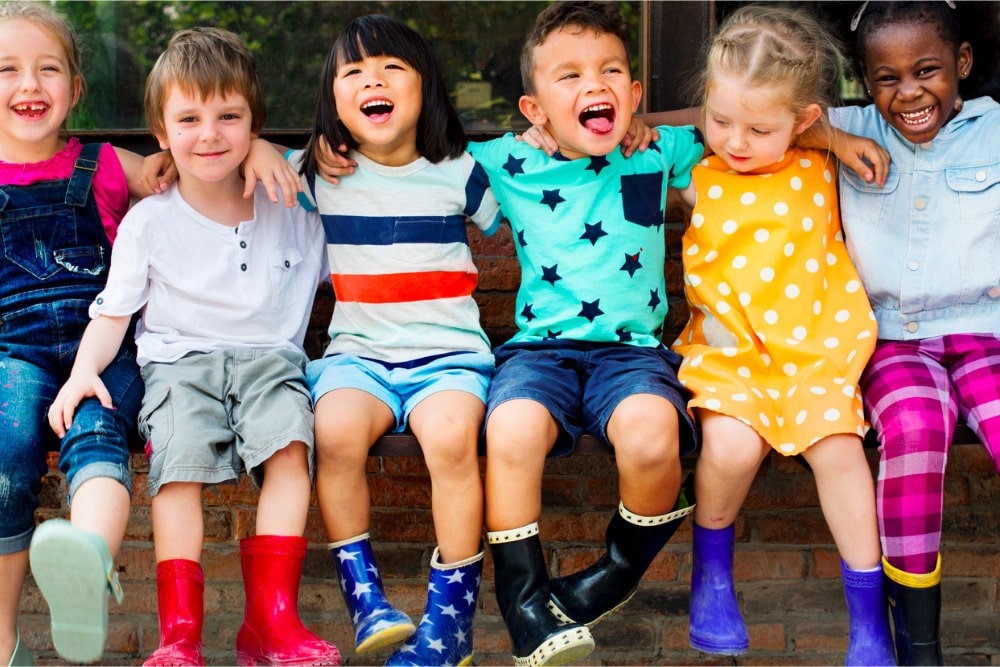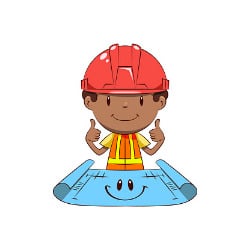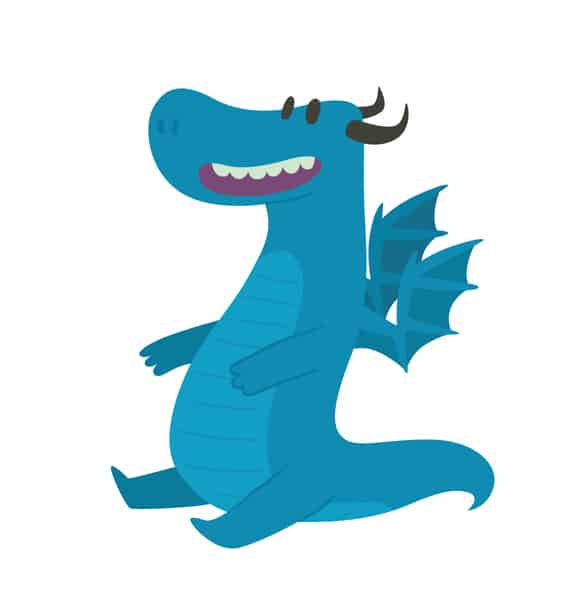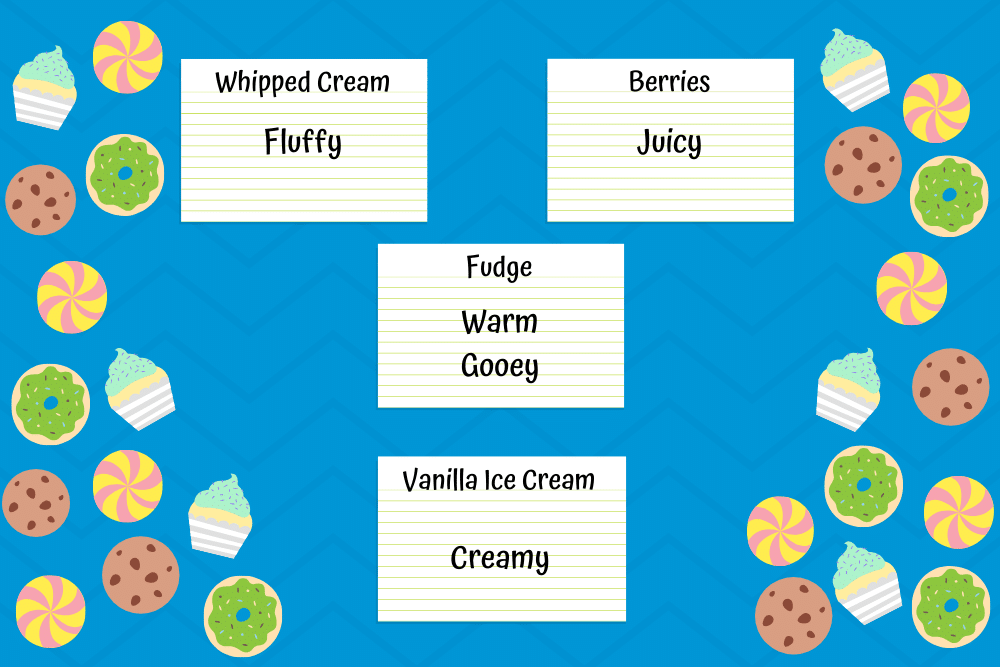 Kindergarten is an extremely special time. It is when kids start building a foundation for reading and writing - skills they will use every single day for the rest of their lives.
Kindergarten is an extremely special time. It is when kids start building a foundation for reading and writing - skills they will use every single day for the rest of their lives.
It is truly amazing to see students start kindergarten only knowing a handful of words and leave being able to read books and construct their own short sentences, but you probably knew that already!
Table of Contents:
- Celebrating Words in the Classroom
- Teaching New Words in Kindergarten with Phonemes
- Building Vocabulary by Introducing Synonyms and Antonyms
- Kindergarten Writing Prompts That Spark Imagination and Build Vocabulary
It is important to get your students excited about learning new words and vocabulary and the best way to do so is to show that you are excited! Jump up and down, shouting things like “Woohoo” during vocab activities and your kindergartners will suddenly think that learning new words is the best thing in the world - and to be honest, it kind of is.
In addition to showing your own enthusiasm, give them projects and assignments that they will enjoy whenever you can.
It’s not always easy to come up with creative and fun vocabulary activities and projects.
If you are feeling a little uninspired at the moment, I have put together three kindergarten writing prompts below that will both spark imagination and build vocabulary skills, but first, let’s talk about introducing your students to new words and vocabulary in the classroom.
Celebrating Words in the Classroom

Our entire world revolves around words and they deserve to be celebrated! You can create areas of your classroom that are dedicated to words.
Whether it is a fun bulletin board with new vocabulary words, an exciting word matching game that can be played during free time, a space where your students can compare notes in their vocabulary notebooks or all three, words deserve recognition year-round.
Teaching New Words in Kindergarten with Phonemes
As nice as it would be to just jump right into talking about building vocabulary skills, I want to make sure we talk briefly about a great technique that is used to teach new words in kindergarten - phonemic awareness.
Teaching phonemic awareness helps your students recognize and spell many words by sounding them out. This is the first step towards success when it comes to learning how to read and write. If you are interested in learning more about teaching phonemic awareness and want a few fun strategies to take back to your class, click here!
Are you Enjoying this Content?
Building Vocabulary by Introducing Synonyms and Antonyms
Your kindergartners already know what synonyms and antonyms are, even though they probably don’t know the words synonym or antonym yet.

You can simply tell them that a synonym is a word that means almost exactly the same thing as another word and an antonym is opposite in meaning to another word, give them a few examples and hope it sticks, but why not make it a little more fun?
There are a ton of great sites where you can download digital games for your class and have them use tablets or laptops to learn. You can also have a few non-digital games in your back pocket, ready to go when your students need a break from the screens.
One of the classics is a matching game. All you really need to make a basic matching game are some index cards and markers. Of course, you can also go all out and create custom cards or use printables off of Pinterest!
What is great about choosing to have your students use this game to learn synonyms and antonyms is that you can adapt the game to fit your classroom environment.
For example, if your students tend to get a little too rowdy when you let them get up from their seats and move around the classroom during an activity, it may be better to have them create a matching game on notecards at their desk and swap with a partner!
On the other hand, if your students need a little energy boost, you can have them tape notecards to their shirts and try to find their corresponding synonym and antonym.
We recently published a blog post outlining non-digital activities to improve 3rd grade vocabulary - almost all of these can be easily adapted to fit the kindergarten classroom.
3 Kindergarten Writing Prompts That Spark Imagination and Develop Vocabulary
1. You are now the owner of a dragon. Describe what your dragon looks like without using the word big.
This is a really fun writing prompt that will get those creative juices flowing while also helping your students put their newfound knowledge of synonyms into practice.

The only restriction for this prompt is that they cannot use the word big when they write about what their dragon looks like, but they can use synonyms for the word big - and there are quite a few. Some common kindergarten level words that are synonyms for big include:
- Huge
- Giant
- Large
- Massive
- Mighty
Don’t give these synonyms to your class right away. Have them try to think of words that can replace big on their own and write them down. If they do not know how to spell a word have them sound it out and correct their spelling later.
Some may be struggling to come up with terms that replace the word big. At this point, you can step in and give them some hints or have them try to complete sentences that would normally use the word big.
Have your students draw a picture of their dragon on a piece of paper.
Then have them write words around the picture that describe the dragon.
What color is their dragon? Does the dragon have horns? Does the dragon have a huge tail? Does it have scales or is it furry?
They can make their dragon look however they want as long as they use a synonym for big to describe it or some of its features.
Next, they can start writing short sentences about their dragon. If they are having trouble putting words together on paper, have them describe their dragon to you or a partner and then try writing down a description. You can take the pictures they drew and their writing and create a dynamite dragon classbook!
2. You can create any dessert you want; the sky’s the limit. How would your dessert look and taste?
I have yet to meet a kindergartener who doesn’t love desserts.
I also have yet to meet a kindergartner who hasn’t thought of or created some crazy Frankenstein dessert decked out with things like gummy worms, cereal, M&Ms, Snickers, jelly beans, brownie bites and who knows what else.
With that being said, this prompt will definitely be a writing activity that they will enjoy!
This prompt is also a fantastic and fun way of introducing adjectives to your students and showing them how adjectives can make their writing more interesting.
First, have your students think about the components that they want to use to create their dessert and write those down on index cards - if they don’t know how to spell one of the things they want to put in their dessert have them sound out the word and draw a picture.
Remember, the sky’s the limit here so if they want their dessert to have apple pie, steak, brownies, cheese popcorn and strawberry cupcakes, let them have at it.
Once they have decided on what they want their dessert to have in it, have them add an adjective or two to each index card to help better describe their dessert.

After they have added an adjective or two to each index card, they can now assemble their dessert! Check out the example below.
Now that they have their dessert “made,” have your students close their eyes and think about what the dessert they created would look and taste like then have them write down a few words that came to mind.
They can now finish the prompt by constructing simple sentences that describe their dessert!
PROJECT IDEA
Have your students “share” their dessert with a partner by having them look at the index cards they have arranged.
Their partner then can draw and describe what they think the dessert would look and taste like. Did their partner add any additional descriptive words or draw elements that they didn’t think of?
Have your students adjust their dessert description accordingly adding in extra details they got from their partner and draw a picture of the concoction they came up with. Take everyone’s work and publish it into a sweet classbook that they will have forever!
After you receive your classbook, throw a publishing party and have every student bring in a dessert of their own that they can enjoy in class!
3. How did you feel during your first day of school?
In kindergarten, your students are starting to learn how to use words to express their feelings with others and this prompt piggybacks on that by introducing the idea of using words to express feelings through writing with a little creative twist at the end.

Start by giving your students a few vocabulary words that help describe emotion. Here are a few to get you started:
Use these vocabulary words to initiate a class discussion about using words to express how you feel. Ask your students to think about what each word means and then give them simple definitions. You can also have them add words to the list during the discussion!
Next, have them take out a piece of paper, divide it into two columns and write the numbers 1-3 in the right column. Then ask these questions:
- How did you feel when you walked into class?
- Did your feelings change throughout the day?
- How did you feel once the day was over?
Give them time to reflect on each question and write down a word or two next to the corresponding number that best describes their feelings.
PROJECT IDEA
Now, have them imagine that they walked into school on the first day and didn’t see any teachers and answer the question: “How would you feel if you walked into school on your first day and didn’t see any teachers?” Have them put their answer in the left column.
Have a quick discussion about how it is okay to feel scared or shy sometimes and how thinking about feelings can help us grow as people and understand ourselves better.
Next, have your students think about what they would do if there were no teachers at the school. They can write down what their actions would be or draw pictures.
Have them ask a partner how these actions would make them feel and make a note of their answer.
Once your students have all of their information written down have them complete this sentence for each of their actions, “If there were no teachers on the first day of school I would ___ and think it would make people feel ___.” Have them add illustrations of what they would do and smiley, sad or mad face next to each action to show the reaction of others.
Take their work and publish it into a classbook. Not only will your students get a kick out of seeing what their classmates wrote, they will also think about how their actions affect others’ feelings.
For free teaching resources—including worksheets, lesson plans and topic ideas and writing prompts— check out our online teacher’s lounge, and order your free classbook publishing kit today!





